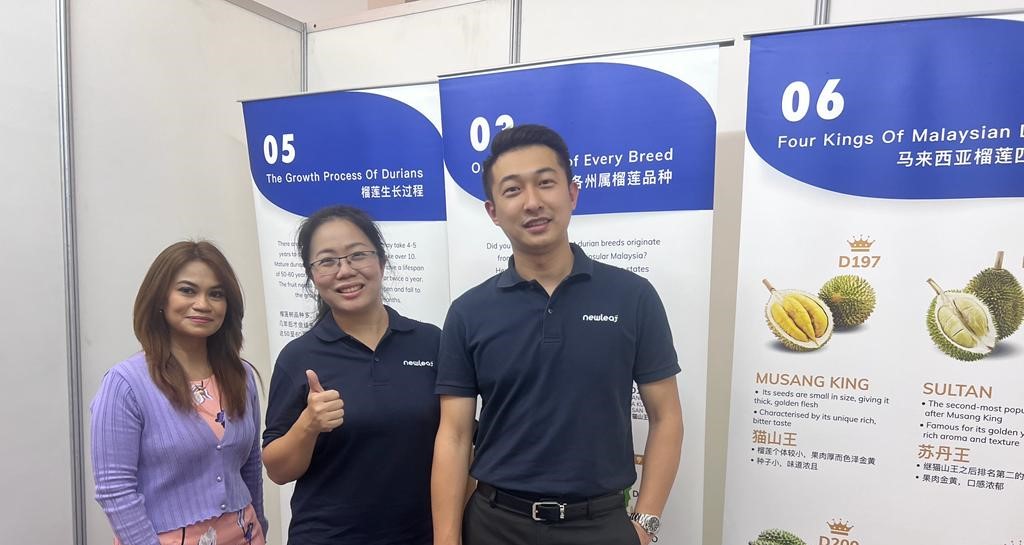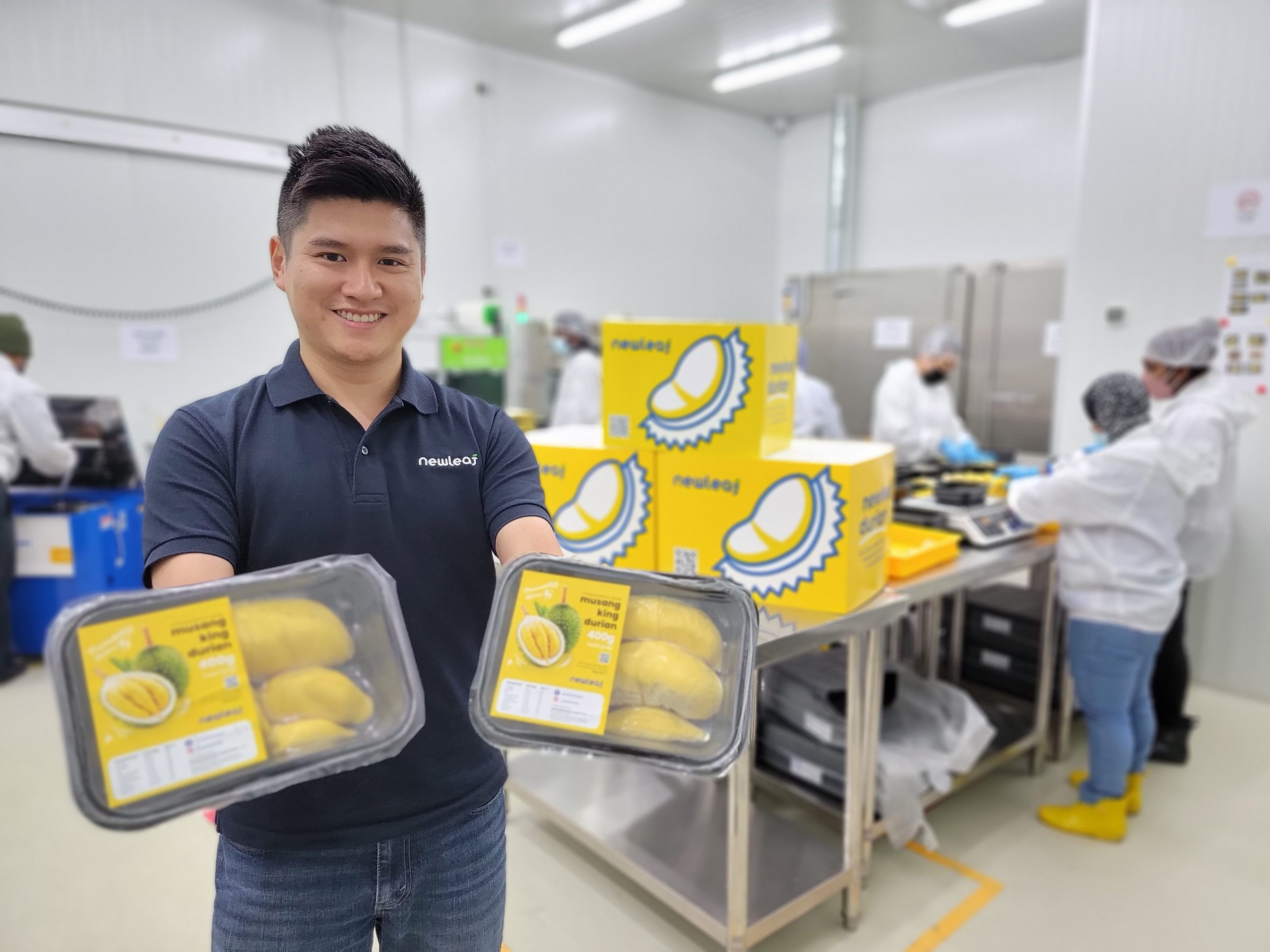
With the rise of consumer awareness and food safety issues, consumers expect businesses to take responsibility for conforming to all food safety, quality, and consumer attribute requirements. Here at Newleaf, we do everything we can to cultivate the trust we are given by our valued customers, and take the necessary steps to maintain it.
When products have to be recalled, this can cast doubt in the minds of consumers, which is why prevention is so important. One of the best ways to do that is by complying to world class certification standards.

As part of the complete agri-value chain under Newleaf, Newleaf Manufacturing Sdn Bhd is the durian processing business that is compliant with the strictest food processing requirements and best practices. We are certified with the Hazard Analysis and Critical Control Point (HACCP) and The Good Manufacturing Practice (GMP) from Malaysia’s Ministry of Health. Being certified ensures that the goods from Newleaf are consistently produced and controlled according to the highest quality standards. We look at every aspect of the manufacturing process to guard against potential risks, such as cross-contamination, mislabeling, and adulteration.

GMP maintains the integrity of the final products. Newleaf ensures that the highest standards are met while carrying out sound operations.
We have a legal and moral obligation to create safe food for our customers. These include meeting basic operational procedures to adhere to GMP requirements such as:
Ensuring a safe and clean external environment of the food premises.
Thoroughly inspect all types of equipment and utensils used.
Using cleaning chemicals, pest control chemicals, and other machine lubricants around the food processing facility.
Ensuring 100% clean surroundings, including premises, equipment, utensils, floors, walls, and ceilings.
Organising and managing storage of trash on the premises.
Carefully inspect foreign matter such as wood, glass, metal, etc., within the finished product.
We analyse the processes for each type of food produced, identify known or reasonably foreseeable hazards that can cause injury or illness to consumers, and implement preventive controls quickly (documented in written food-safety plans) to avoid future problems.

We are also registered under the Food and Drug Association of the U.S. so can fully support importers of the U.S. In some cases, if the FDA’s guidelines aren’t met, it can result in severe legal penalties. Therefore, we pay strict attention to these areas:
1. QUALITY MANAGEMENT
Quality management is a principle that focuses on ensuring that manufactured products are fit for their intended use. For food, this means ensuring that the food meets the FDA’s food safety and quality measures. So, there should be no raw, expired, or improperly processed products that can potentially harm consumers or cause contamination.
2. SANITATION AND HYGIENE
In terms of GMPs, there is nothing more vital than sanitation and hygiene, particularly for drug, cosmetic, and food manufacturers. This covers anything that can lead to contamination, if proper hygiene and sanitation is not practiced.
3. SUITABLE FACILITY LOCATIONS
The FDA’s CGMPs state that manufacturing facilities should be in a suitable location, free from the risk of any contamination. Additionally, the facility should be designed to help minimize the risk of potential errors in operations and should be easy to clean and maintain.
4. EQUIPMENT
Similar to the location requirements, any equipment within the facility should be designed, located, and maintained to function as intended. All equipment should also be regularly cleaned and stored according to the proper procedures, and removed if found defective or malfunctioning.
5. RAW MATERIALS
Any materials for production are required to be stored appropriately. Furthermore, a proper inventory of the raw materials the facility has in stock should be available and updated regularly, as well as documentation of where the materials come from, to ensure quality.
6. PERSONNEL
Naturally, successful GMP compliance relies heavily on facility personnel. Everyone who works for the facility should be well-trained and qualified to do their assigned job. They should have a clear awareness of the various GMP principles and receive continual training, so they are always up-to-date with their job skills and what is expected by the FDA.
7. VALIDATION AND QUALIFICATION
The critical steps of the manufacturing process should be validated to ensure they meet specific GMP qualification guidelines. Regular reviews of this process will also help to ensure that product quality remains high and consistent.
8. HANDLE COMPLAINTS
Another key factor of GMP is having a GMP-compliant system for handling complaints including prepared solutions for all contingencies within the facility.
9. DOCUMENTATION AND RECORDKEEPING
Keeping thorough records is an essential part of any company, and therefore a critical part of the GMP. Everything about the facility should be documented in clear, legible ways. All documents should be kept in an organized system where managers can easily find and refer to various aspects of the facility at any time.
10. INSPECTIONS AND QUALITY AUDITS
Another step that goes into GMPs in all facilities are inspections and quality audits. By regularly conducting inspections and audits, facilities can ensure that they are properly complying with the GMP. These checks will also help to keep the facility from forgetting to follow the guidelines; otherwise, they will be hit with serious consequences.
Newleaf adheres to these standards to help to assure the identity, strength, and quality of our products. It also helps to cut down on facility losses and waste and also help to protect the company, consumer, and the environment from harm. We hope our efforts continue to earn and maintain the trust of consumers who want to know the products they buy are manufactured in safe, well-regulated environments, and to government standards. Newleaf will continue to make a strong effort to create a safe, high-quality, and sanitary environment to create safe and high-quality products for consumers.





















